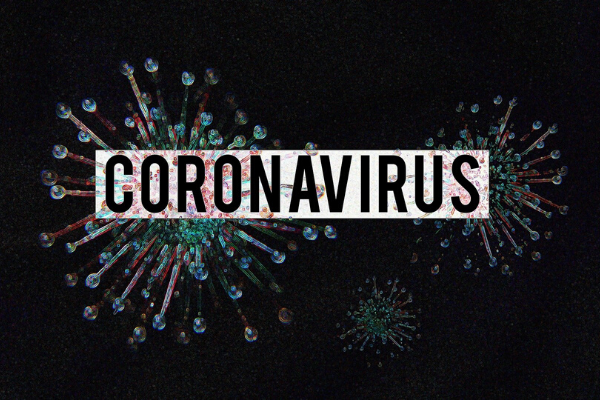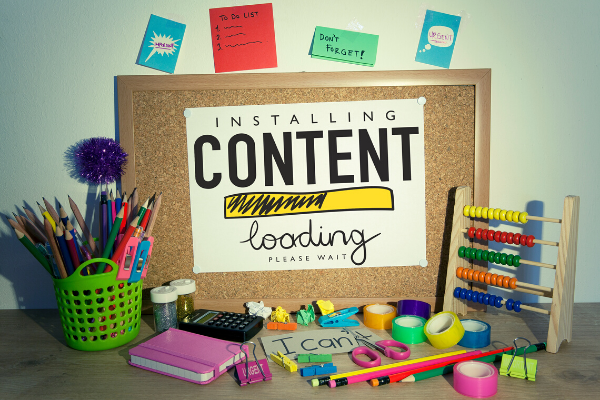Insights
INSIGHTS
All Topics
My Account
Putting your audience at the centre of your COVID-19 fundraising initiatives
16 Apr 2020by Chris Hall
Our very own Marketing Manager, Chris Hall, shares best practice for putting your audience at the heart of your COVID-19 fundraising initiatives
Coronavirus has brought with it a lot of challenges: new work environments, operational shifts and lots and lots of noise.
Inboxes and news feeds are dominated by information about COVID-19. We’re inundated with letters from CEOs, service updates and special offers. All screaming: ‘Look at me, I’m important!’
It’s at these points of heightened saturation that audiences can be distracted, or even switch off entirely. But with that comes opportunity. We have a captive audience, with most people now confined to the homes and spending more time on digital devices more than ever before, which gives charities a greater opportunity to engage with donors.
One way to ensure you break through the noise is by making good content.
It sounds very simple and that’s because it is. People perceive content as this beast of a thing that takes massive amounts of resource and needs dedicated specialists to be relevant. But that’s all a myth.
When you boil content down to its core, it’s just great storytelling - and like every story ever made you need to keep 2 things in mind:
1.) The audience
2.) The narrative
Your audience is key to COVID-19 digital fundraising
The one thing that underpins all content creation is the audience – who will consume this? Every piece of content; every fundraising campaign, every email or social post should be done with your intended audience in mind.
As charities, we are very lucky in that we usually enjoy quite a close relationship with our supporters and collect large data sets for that allow us to create informed and targeted campaigns. From that data, we get to know quite a lot about who our audience are. This can tell us how to reach them and also how to reach people like them.
We know where they come from; their preferred contact methods; their likes and interests; how and when they engage with us and much more. And we then use this data to help us identify how they engage with us, what they engage with and where to find them. Essentially, the idea is to get to know your users well enough to make the right recommendations when needed but be invisible when not.
We do this by building personas. A persona is a "fictional character that communicates the primary characteristics of a group of users, identified and selected as a key target through use of segmentation data". Strategically, having personas for your potential donors and supporters can make it easier for charities to gauge how donors will react to certain content and campaigns and it informs us of how we should promote and pitch content to the right people, in the right place at the right time.
User Generated Content (UGC) unlocks new ways to connect with donors
Personas are just the base level of personalisation. At the heart of any marketing campaign is the ability to build emotional connections and there’s no better way to create an authentic relationship between audience and cause than to let your users tell your story. This is known as User Generated Content or UGC.
Consumers are 2.4x more likely to say user-generated content is authentic compared to brand-created content. This can give your charity the engagement edge above others backing brand-led initiatives. With authenticity comes trust, something that often looms over the charity sector and donations. If we were to think of ourselves as the food or travel industry, would you go on holiday without checking the hotel reviews, or their Facebook photo page? Would a millennial pick a restaurant if it had no Instagram presence? Trust is imperative to action and a whopping 70% of consumers trust online opinion.
Both trust and authenticity are high determining factors of purchase or donation decision, In the commercial sector, where a lot of donors reside, the amount of people who have said UGC highly impacts their purchasing decisions has risen to 79% as of last year. As still a relatively new content type for charities, there’s a lot of low hanging fruit to be had when it comes to UGC.
Instagram is a huge platform for UGC. Pre-coronavirus, The Woodgreen animal charity found a quick and effective way to do this in one of their fundraising campaigns. They made the most of their followers’ content by asking for their own stories of pet adoption and included them in a personalised Instagram story with their pet’s name and a clear call to action for other supporters to go and adopt. A super interactive campaign that celebrates supporters and encourages others to follow suit.
UGC can be used across multiple channels and can take any form; photos and videos are the most popular, but blogs, podcasts, webinars and even events can be user-led.
- Use platforms like Zoom bring users together
- Use photos and videos to tell donation journeys from payment to end service
- Create virtual meet-ups for users and donors to interact with one another
- Have users host webinars for your donors to talk through what a donation means
- Have donors submit their giving motivations through snapchat or social stories
- A donor led blog or vlog series
- GET CREATIVE!
***Note: be user generated but don’t be exploitative, audiences better connect with the deep, meaningful stories from the user themselves rather than an actor/employee-led discussion. Be authentic***
Your audience can be your most powerful tool for COVID-19 fundraising
Don’t underestimate the power of your audience, within them lies your biggest flag bearers. We constantly ask our users to do things for us. So, make sure you’re thanking them back. While there’s no numbers to support this yet, it’s fair to say that the likelihood of repeat donation or repeat visit or repeat purchase is increased if people feel their time, effort and or money is valued. A simple analogy that puts this in perspective is holding a door open for someone.
Giant digital introduced the concept of altruistic reciprocity at our conference in May and it’s something that’s easily forgotten about and not often put in practice but can have positive ramifications for any charity willing to give it some thought.
Imagine if you will, pre-COVID19, we’re all still allowed to our offices, that you hold the door open for an oncoming stranger, they walk through the door, stop and give you a great big thank you. How do you feel? You’d smile, high 5, potentially hug? Either way you’d feel better for it.
Alternatively, you hold the door open for an oncoming stranger, they walk through the door, and this time don’t stop, don’t so much as acknowledge your existence - how do you feel now? Well, if you’re anything like me you’d be royally cheesed off and would either do it with limited effort next time or worse, wouldn’t bother doing it at all.
How do you think a donor or supporter feels when they receive no response when they engage with you?
It can be something as small as setting up a quick thank you email or text with a donation update or thank you that can help your organisation stand out above everything else. Blood.co.uk are amazing at this and I cite them regularly in articles or at speaking events. While a different type of donation, they send thank you texts after each session, then update you on which hospital your blood has been sent too, before asking you to book your next session and push you back into their donation funnel. It’s got a real involved - and dare I say - personal experience to it.
Altruistic reciprocity can be a quick win way to build on trust and authenticity that we were talking about earlier in the article, it can solidify cause loyalty and make a one-off donor a repeat giver.
Charities can look to their biggest fans for help more than others, for content or even extra donations and they’ll be willing to do it but be sure to make them a part of it.
So, go on, be brave and more importantly, be audience-first! I’ll be following with part 2 – the story soon!
07 Mar 2025by Ioan Marc Jones
A-Z incredible fundraising ideas for charity
07 Mar 2025by Ioan Marc Jones
An A-Z glossary of service delivery terms and definitions
Our Events
Charity Digital Academy
Our courses aim, in just three hours, to enhance soft skills and hard skills, boost your knowledge of finance and artificial intelligence, and supercharge your digital capabilities. Check out some of the incredible options by clicking here.



















